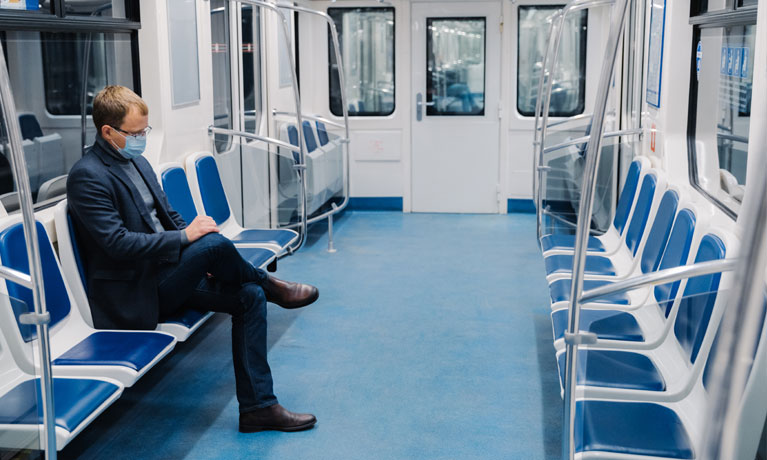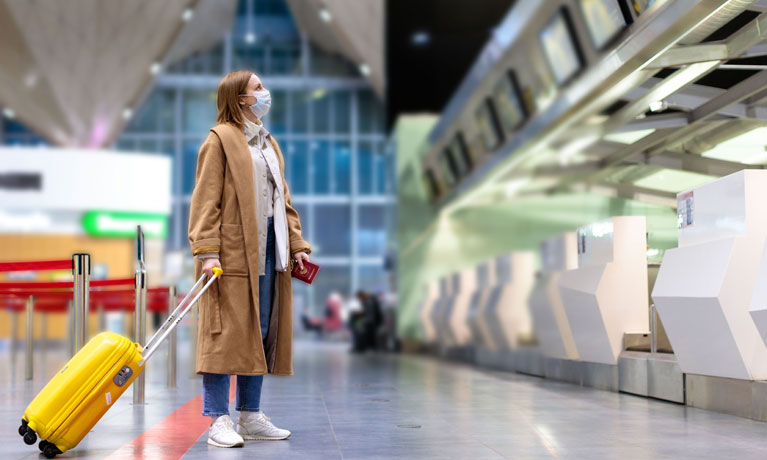By Dr Andrew Jones and Dr Jason Begley
The COVID-19 pandemic has had a significant impact on economies and societies worldwide, with many regular routines and habits dramatically altered due to the presence of the virus and the control measures introduced in order to reduce the rate of infection.
One of the most impacted areas by the pandemic has been travel, with many national governments introducing stringent interventions that have restricted movement, discouraged the use of mass-transit services, and enforced mandatory quarantines for those visiting specific countries with high infection rates.
Due to these measures, and concerns surrounding the virus, three areas of focus have emerged from researchers seeking to understand the impact of the pandemic on travel. These key areas relate to travel patterns, perceptions of risk, and modal shifts.
How do you travel during a pandemic? The jeopardy game
Travel for particular purposes, such as leisure, commuting, and shopping for essentials, has changed at different rates. For example, travel for leisure and commuting purposes has fallen at a much greater rate than shopping for essentials (Shakibaei et al., 2021). This can be explained partly through the nature of the restrictions, which have closed leisure venues and some workplaces, but also through changing perceptions of risks. For example, even where leisure facilities have been open, individuals sought to reduce their travel to these locations due to concerns surrounding the virus.

In relation to those who need to travel, principally for work or accessing key services, there is evidence of a shift away from public transport towards private forms of mobility. Those without access to a vehicle, or unable to cycle, are at greater risk as they continue to depend on mass-transit for commuting purposes. To address these inequalities there are calls to establish a more equitable transport system, such as ensuring that the quality of cycling infrastructure is ‘levelled up’ (Shamshiripour et al., 2020).
Whilst accessibility is a critical component influencing travel behaviour, perceptions of risk are another aspect that is shaping current outcomes related to transportation demand. Passengers have shifted away from public transport as they view using these services as carrying a greater risk of infection than private modes of travel. However, as illustrated by Beck and Hensher (2020), the interventions from government help to shape these perceptions of risk, and mean that attitudes will change based on the restrictions imposed.
Is there nothing new under the sun?
The analysis presented in this blog raises significant social and economic questions, as the extent to which these behavioural changes endure is extremely uncertain.
One view, as articulated by Gkiotsalitis and Cats (2020), is that previous crises, such as 9/11 and the SARS outbreak of the early 2000’s, did not lead to long-term changes in travel behaviour. However, such events are not comparable to the current situation as the consequences of the COVID-19 pandemic are more far-reaching. As such, it is entirely possible that the behaviours adopted during the pandemic will endure for some time. This has implications for investment decisions in transportation networks as the need to improve mass-transit infrastructure becomes less critical than, for example, supporting the provision of high-speed broadband and improved digital services. By extension, those on the margins, already faced with challenges around mobility and accessibility, may find themselves even more isolated than ever before, reducing their standard of living. Additionally, a sustained contraction in mobility will also raise questions about the funding of public transport, as the level of government intervention required will need to increase in order to replace the income lost from passengers.
Alongside the uncertainties created by COVID-19, broader impacts from climate change and the rapidly evolving nature of mobility technologies will shape the future of travel. New technologies and business models have been introduced into urban spaces with the growth of bike share schemes, and e-scooter provision. Such mechanisms may form part of the response to COVID-19, but also offer sustainable alternatives to private vehicles and effective last mile solutions in city spaces. However, shared transport schemes are subject to some of the same concerns as public services as there are multiple users and contact points. Moreover, unless users willingly substitute these alternative modes for private transport solutions that have grown in response to the pandemic, their impact on health, climate change and air pollution will be minimised. As such, restoring confidence in these services will be a fundamental component of the response to the current crisis.
References
Beck, M.J. and Hensher, D.A. (2020) Insights into the impact of COVID-19 on household travel and activities in Australia – The early days of easing restrictions. Transport Policy, 99, pp95-119.
Gkiotsalitis, K. and Cats, O. (2020) Public transport planning adaption under the COVID-19 pandemic crisis: literature review of research needs and directions. Transport Reviews. DOI: 10.1080/01441647.2020.1857886
Shakibaei, S., de Jong, G.C., Alpkokin, P., and Rashidi, T.H. (2021) Impact of the COVID-19 pandemic on travel behavior in Istanbul: A panel data analysis. Sustainable Cities and Society, 65, pp1-18. Shamshiripour, A., Rahimi, E., Shabanpour, R., and Mohammadian, A. (2020) How is COVID-19 reshaping activity-travel behavior? Evidence from a comprehensive survey in Chicago. Transportation Research Interdisciplinary Perspectives, 7, pp1-16.




Comments are disabled